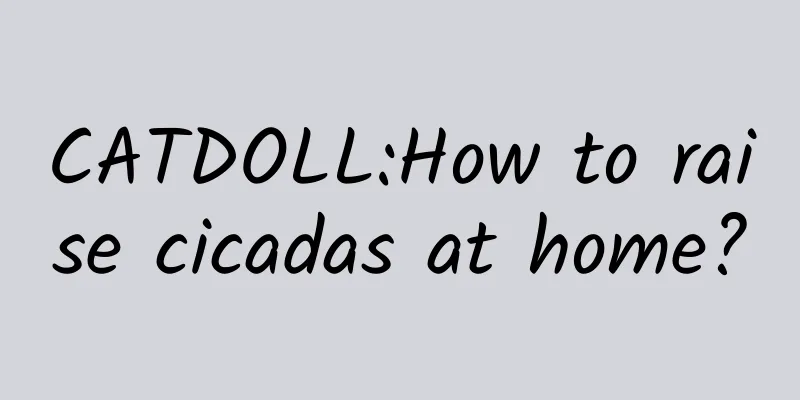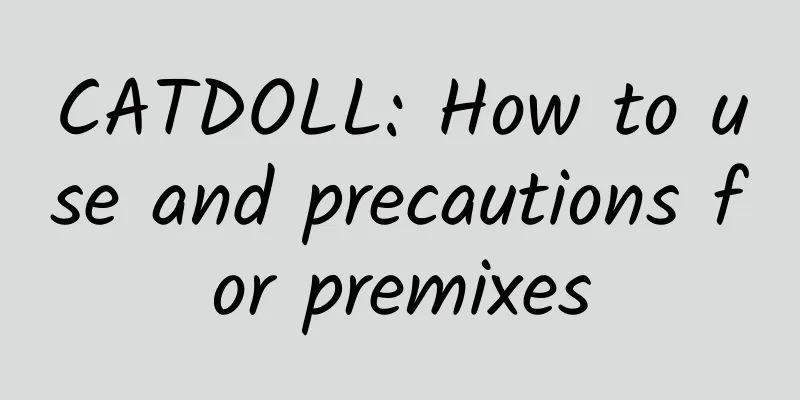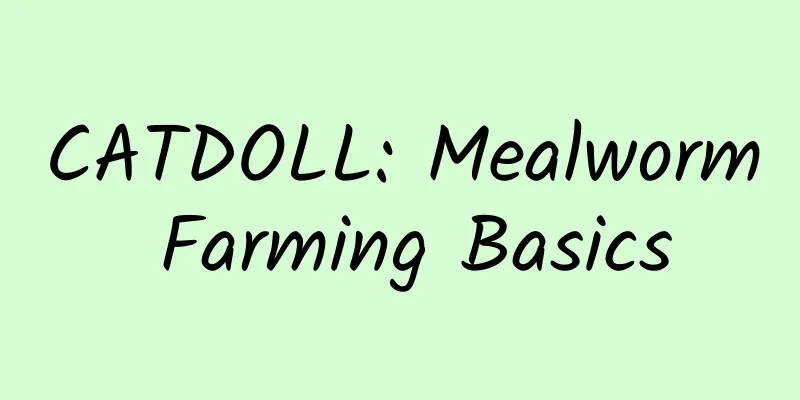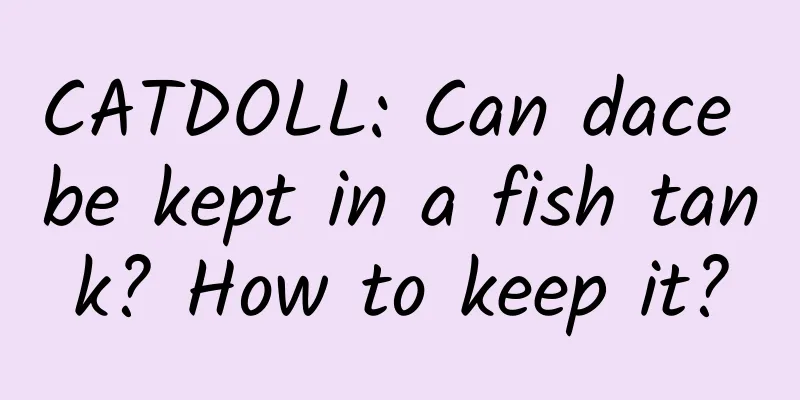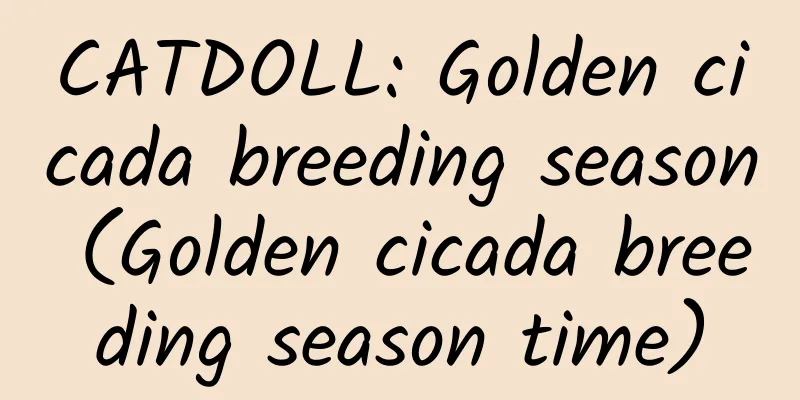CATDOLL : CATDOLL: What is the specific process of breeding whiteleg shrimp?

|
:Lipopenaeus vannamei is a high-quality shrimp species in South America. Most people in South America use shrimp farming as their main source of income. Studying the farming techniques and disease prevention of Lipopenaeus vannamei is conducive to establishing a new concept of healthy breeding. This article first introduces Lipopenaeus vannamei from three aspects: living habits, feeding habits and farming techniques, and then analyzes several common diseases of Lipopenaeus vannamei and the corresponding prevention techniques. Keywords: Penaeus vannamei; aquaculture technology; disease control 1. Farming technology of white shrimp 1.1 Ecological habits of Penaeus vannamei First of all, temperature has a great influence on the growth of white shrimp. The most suitable growth temperature for white shrimp of different sizes is different. The water temperature between 18℃ and 33℃ is more suitable for white shrimp to survive, and within this temperature range, the higher the water temperature, the better the adaptability of white shrimp. However, under conditions below 18 degrees or above 33 degrees, the disease resistance of white shrimp will decrease. Secondly, salinity and pH will have a great impact on the growth of white shrimp. The salinity of 10%-25% and the pH of 7.6-8.5 are more suitable for the growth of white shrimp. In addition, the dissolved oxygen tolerance of white shrimp of different sizes is different, and the dissolved oxygen capacity of white shrimp will decrease as the white shrimp grows. Generally speaking, white shrimp has a strong tolerance to drought. It can also be concluded that white shrimp that are not tolerant to drought must be sick. 1.2 Feeding habits of Penaeus vannamei Whiteleg shrimp likes food with high protein content, which is also good for its growth. In addition, the eating habit of whiteleg shrimp is that they eat more at night than during the day. The proportion of food intake at night accounts for about 70%. 1.3 Farming technology of Penaeus vannamei Before the white shrimp is introduced, the pond bottom must be cleaned and disinfected, and it is best to dilute the water for breeding. The water color is mostly green or yellow-green. This is conducive to the molting of white shrimp. Bait and management methods must be arranged and selected strictly according to the living habits of white shrimp. When selecting white shrimp larvae, it is necessary to strictly screen and check whether the white shrimp are virus-free. Try to choose white shrimp larvae with strong mobility and healthy limbs. When transporting white shrimp, the bag must be disinfected, and then fresh water is injected into the bag, and then the white shrimp is put in. The white shrimp cannot be put directly into the bottom of the pond. The bag containing the white shrimp must be placed in the bottom of the pond to adapt for half an hour before opening the bag. 2 Common disease prevention and control techniques for white shrimp 2.1 Eye disease Eye rot is a disease that almost all shrimp species will have. It is caused by pathogenic bacteria at the bottom of the aquaculture water or bacteria carried by bait. It is mostly caused by Vibrio cholerae. The prevention and treatment method should start from the source to prevent the occurrence of this disease. If it is found that white shrimp are infected with this disease, immune sugars and dibromohydantoin must be placed at the bottom of the pond first, and then Flucon and Siju Juhuang Detoxification Powder are mixed and fed to white shrimp after three days. Take it for seven consecutive days. 2.2 Shell ulcer disease Shell ulcer disease is mainly caused by the poor environment for breeding white shrimp. This disease often occurs in ponds with serious pollution at the bottom or at the bottom of ponds with high breeding density. Usually, white shrimps are injured by collisions when they are caught, and then the bacteria in the pond water take advantage of the opportunity to enter, causing the white shrimps to develop this disease. If this disease is not treated in time, it will cause the death of white shrimps. The method to prevent and control this disease is to keep the pond bottom environment clean and regularly disinfect or change the pond water. The breeding density should be adjusted appropriately according to the size of the white shrimps. The breeding density should not be too large to avoid insufficient oxygen for the white shrimps. Check the white shrimps regularly. If the white shrimps are found to have this disease, they can be prevented and treated by adding oligosaccharides and other drugs to the bait. 2.3 Enteritis Enteritis is a typical disease that occurs in July and August when the water temperature is high. It is caused by the high water temperature, the residual bait or the feces that are not cleaned up in time, which causes the white shrimp to have difficulty breathing and ammonia nitrogen poisoning. It is a disease caused by the infection of the respiratory system. Therefore, the prevention method is to clean the feces at the bottom of the pond in time during the months when the water temperature is high, change the water for the white shrimp in time, keep the bottom of the pond clean, and provide fresh air for the white shrimp. If it is found that the white shrimp has been infected with this disease, the first thing to do is to spray the bottom of the pond with drugs such as Virus Quick Elimination and Liver Protection. The next day, feed the white shrimp with compound simple vitamins, allicin and Qingyuan and other drugs. If you persist for three to five days, you can restore the white shrimp's ability to absorb food, absorb nutrients and resist bacteria. 2.4 Stress muscle white burn This disease is also a common disease in the hot season. The cause is that in the hot season, the temperature difference of the water changes greatly, and the white shrimp may not be able to adapt for a while. In addition, there are often many bubbles at the bottom of the pond in the hot season. If the fishing intensity is too high or some inappropriate drugs are added to the bottom of the pond, it is easy to cause stress-induced muscle white burning disease. The symptoms of this disease are that the muscles of the white shrimp are white-burned or bent. If they cannot recover, it will cause the death of the white shrimp. The prevention and control method is to feed amino acids and shrimp and crab multivitamins to the white shrimp. 3 Conclusion Nowadays, farming white shrimp has become the main source of income for some people in South America. With the development of science and technology, some common diseases of white shrimp can be effectively controlled and treated. Research on the farming technology of white shrimp and common disease prevention and control technology is conducive to exploring pollution-free and healthy farming technology. We must attach importance to disease prevention and control, and achieve scientific, healthy and sustainable farming. White shrimp is a high-quality shrimp species in South America. Most people in South America regard farming white shrimp as the main source of economic income. This article first introduces white shrimp from three aspects: living habits, feeding habits and farming technology. Then, by introducing several common diseases such as eye rot, shell ulcer disease, enteritis and stress muscle white burn disease, the common disease prevention and control of white shrimp is studied. 【References】 [1] Zhang Weiquan. Introduction to the biology of Penaeus vannamei, an important aquaculture species in the world [J]. Marine Science, 1990 (3): 69-72. [2] Yu Linjiang, Yu Kuijie, Zhang Naiyu. Preliminary study on artificial propagation technology of white shrimp [J]. Oceanology and Tidal Marsh, 2001, 32 (5): 575-578. [3] Wang Jiqiao. Biological research and breeding of white shrimp [M]. Beijing: Ocean Press, 2003: 135-181. [4] Hang Xiaoying, Zhou Zhiming, Li Qian, et al. Effects of different culture modes on growth, disease occurrence and water quality of Penaeus vannamei [J]. Jiangsu Agricultural Science, 2014, 42 (5): 191-192. 1. Contract a pond 2. Pond cleaning and disinfection 3. Raise water and release shrimp fry 4. Breeding and feeding Five: Harvesting shrimp Detailed explanation: In order to adapt to the market demand after joining the WTO as soon as possible, improve the international competitiveness of my country's aquatic products, and enhance the The safety and hygiene awareness of products is strengthened. During the breeding process, the healthy breeding technology specifications are followed to produce qualified and pollution-free products. Food has become a top priority for the aquaculture industry. Vannamei is a new species of shrimp culture in my country. Kang breeding technology is a new breeding model promoted in Zhangzhou, Fujian Province in recent years. It has the advantages of low cost, few diseases, and It has the characteristics of fast effect and high benefit, and is of urgent and important significance. The main technologies are introduced as follows: 1. Breeding environment 1. The pond environment for the cultivation of white shrimp should be kept away from natural seawater areas, and the soil should not be polluted by "three wastes". There should be sufficient fresh water source, and the water quality should meet the standard of "NY5051-2001 Water Quality for Pollution-free Food Freshwater Aquaculture". The pond is rectangular, with an area of 3 to 5 mu, a muddy bottom, good water retention, and a water depth of 1.3m to 1.8m. 2. Preparation before stocking: Before stocking, the old pond should be cleared of silt, fully exposed to the sun, and 100 kg of quicklime should be used. / mu ~ 150kg / mu disinfection. The aquaculture water is made of agricultural salt or concentrated seawater (brine) mixed with fresh water. The usage is 600kg/mu to 800kg/mu, and the usage of brine is 5t/mu to 8t/mu. Less than 1.00‰. 2. Seedling quality and stocking 1. Quality requirements Seedlings must be healthy, lively, of uniform size, clean in surface, and sensitive to external stimuli. Swimming has obvious directionality; No virus is detected by PCR and other methods for white spot virus sampling; Body length must reach 1.0 cm Above; after desalination to a salinity below 3.00‰. 2. When stocking the shrimp, the optimum water temperature is 22℃~35℃. One day before stocking the shrimp, take a small amount of shrimp for trial culture. The shrimp fry can only be released after the survival rate reaches 85% or more within 24 hours. The water temperature difference should not exceed 3℃ when releasing the fry, and the shrimp fry should be placed in the water first. The bag is placed in the pond water for 10 to 30 minutes before being unpacked and put back into the pond. The stocking density is generally 40,000 to 60,000 fish/mu; In ponds equipped with oxygenation equipment and convenient water inlet and outlet, the stocking density can be increased to 100,000 per field. 3. Feeding and Management 1. Water quality control adopts semi-closed breeding method. The water level is 60cm~100cm when stocking. In the early stage, add water every 3cm~5cm per day, after filling up, change a small amount of water according to the water quality to keep the salinity of the pool water at 1.00%. The pH value should be controlled between 7.8 and 9.2. If it is lower than 8.0, quicklime can be used to adjust the pH value. The dosage is 5kg/mu to 15kg/mu. When the pH value exceeds 8.8, talcum powder can be used to adjust the pH value. The dosage is 10kg/mu to 20kg/mu. The transparency of the pool water is maintained at 25cm~40cm, it can be regulated by replacing new water; the dissolved oxygen in the pool water is kept above 4mg/L, and the ammonia nitrogen, nitrite, Hydrogen sulfide is controlled below 0.2 mg/L. 2. Feed quality requirements and feeding methods Feed should be in accordance with industry standards, local standards and "NY5072- The shrimp compound feed that meets the "2002 Pollution-free Food Fishery Compound Feed Safety Limit" standard does not use expired, moldy, or contaminated feed. Contaminated feed. It is prohibited to use fresh seafood as bait. The drugs and types of drugs used in bait made of drug additives should comply with agricultural The provisions of the Ministry of Industry and Fisheries' "Specifications for the Use of Feed Drug Additives" and "NY5071-2002 Non-polluting Food and Fishery Drugs Use According to the "Guidelines" standard, antimicrobial drugs should not be added to feed for a long time. Within half a month after the shrimp fry enters the pond, they mainly feed on the basic bait in the pond water, supplemented by egg custard, shrimp chips, etc. After that, feed the shrimp with compound feed. Large-sized seedlings with a body length of 2.0 cm to 3.0 cm can be directly fed with compound feed. Feed. Specific feeding method: Feed 2 to 4 times a day. When the body length is 1 cm to 3 cm, the feed amount accounts for 10.0% of the body weight. %~7.0%; When the body length is 3cm~7cm, the feeding amount accounts for 7.0%~4.5% of the body weight; When the body length is 7cm~10cm, The amount of feed accounts for 4.5% to 3.0% of body weight; when the body length is greater than 10cm, the amount of feed accounts for 3.0% to 2.0% of body weight. In order to accurately control the amount of feed, 2 to 3 feeding tables are set up in each pond. The feeding tables should be set at the bottom of the pond near the shore. The feed is 1.5% of the amount of bait each time, and the rest is spread around the pond. Check the feed table 2 hours after each feeding. The amount of remaining bait should be adjusted according to the weather, water temperature and water quality. 3. Disease prevention and control and drug use requirements Disease prevention should adhere to the principle of "prevention on land and rock" and take healthy breeding technology measures. The use of drugs must be in accordance with "NY5071-2002 Non-polluting Food and Fishery Drug Use Guidelines" The common diseases and prevention methods of white shrimp in dilute farming are as follows: (1) Viral disease symptoms: The virus found so far is mainly white spot baculovirus, and its main symptom is that the diseased shrimp cannot ingest Food, often with sticky substances attached to the body surface, irregular white spots can be seen after the cephalothorax is peeled off. Cause: Judging from its epidemic cause, The presence of pathogens, coupled with a bad environment and unhealthy shrimp bodies, can cause shrimp disease outbreaks. The infection routes can be divided into vertical transmission and horizontal transmission. Vertical transmission is intergenerational transmission, while horizontal transmission is mainly through pool water, The reason why the incidence of dilute farming is low is that this model fundamentally cuts off However, this does not mean that this model of culture will not cause viral diseases. If the shrimp fry are infected with viruses or have Other virus sources, coupled with the deterioration of the breeding environment and unhealthy shrimp bodies, are also prone to viral diseases. Effective therapeutic drugs should adhere to the principle of "prevention first, scientific feeding management", improve the breeding environment, increase Strengthen the resistance of shrimps and promote healthy breeding. First, the pond should be thoroughly dredged, sun-dried and disinfected before stocking. Second, healthy and disease-free shrimp fry should be released; third, fresh seafood bait should not be fed; fourth, photosynthetic cells should be used regularly. Bacteria, water purifiers and other water quality and bottom quality improvers are used to continuously improve the breeding environment. (2) Symptoms of Vibrio disease: red appendages (red legs), red whiskers, red tail, broken whiskers, rotten gills, black gills, rotten tail, etc. Sick shrimp usually swim alone at the edge of the pond with an empty stomach. Cause: Disease caused by Vibrio parahaemolyticus or Vibrio anguillarum. Usually, There are a small amount of Vibrio in the water and on the shrimp. When the environmental conditions deteriorate or the feed is malnourished and the shrimp resistance decreases, Vibrio If the bacteria multiply in large numbers, it will cause Vibrio disease. Prevention and control: Maintain a good breeding environment, accurately control the amount of feed, and do not feed variable When the disease occurs, dibromohydantoin and PV iodine 0.3mg/L~0.4mg/L can be used for treatment, and spray once every 1~2 days. Use it continuously for 3 to 4 times. At the same time, you can use PV iodine + isatis root, rhubarb, andrographis paniculata to make an iodine mixture in a ratio of 1:1. For oral administration, add 1kg to every 100kg of feed to make medicated bait and feed continuously for 5 to 7 days. (3) Symptoms of red body disease: The shrimps are thin, their body color turns red, their stomach and intestines are not full, and they often have red whiskers and red Cause: Whether this disease is infected with Taura virus has not yet been determined. Prevention and treatment: Thoroughly dredge the silt, Use bottom conditioners or water conditioners to improve the breeding environment during the period; release healthy and disease-free shrimp fry. PV iodine 0.3mg/L~0.4mg/L, spray once a day, use 3 times continuously. At the same time, take PV iodine mixture orally. The method is the same as that for treating Vibrio disease. (4) Synechococcus symptoms: Many white ciliated parasites grow on the body surface, the parasite moves slowly, swims slowly and unbalancedly. Affects normal breathing and feeding, and in severe cases causes mass death. Cause: caused by polycystic ovary syndrome parasitism on the body surface or gill filaments. Treatment: Potassium permanganate 1mg/L or formalin 5mg/L~10mg/L has certain therapeutic effect. (5) White syndrome symptoms: The abdominal muscles of the diseased shrimp turn white and opaque, and some of the whole body muscles turn white and turbid. The white queen died immediately. Causes: due to large temperature differences in water, poor water quality, insufficient dissolved oxygen, and excessive stocking density. Prevention and control: The stocking density should be appropriate, and the dissolved oxygen in the water should be maintained above 4 mg/L. The water temperature difference should be less than 3°C when stocking. When the disease occurs, spray 0.3mg/L to 0.4mg/L of hydantoin throughout the pond, once every 2 days, for 3 consecutive times. Take oxytetracycline orally (with bait) at a dosage of 50 mg/kg to 80 mg/kg body weight, and feed continuously for 5 to 7 days. (6) Aquatic insects and pests such as water silkworms (dragonfly larvae), water clams (water beetle larvae), and tadpoles are white Common aquatic insects and pests in shrimp farming will not only compete for feed, but also eat shrimp fry, causing great harm. Therefore, before stocking, check whether there are water scorpions and other predators in the water. If found, disinfect and clean the water with 1PPm~2PPm trichlorfon. Remove, then drain the pond water, add water and stock the pond 7 days later. If you find water centipedes during the breeding process, you can first use a light to lure them. Then remove them; if tadpoles are found, remove them in time. You can also use 15mg/L~20mg/L of tea seed cake to eliminate pests. (7) Nitrite poisoning is caused by excessive concentration of nitrite accumulated in pool water. The nitrogen content is too high, the oxygen is insufficient, the oxidation process is slow, and the purification process of ammonia-nitrous acid-nitric acid is not smooth. Leading to the accumulation of nitrite nitrogen. In addition to high nitrite concentration, pH value is also a related condition for nitrite poisoning. If the pH value is too high, the toxicity is relatively low. Prevention and control: flush with large amounts of water to reduce the concentration of nitrite; add appropriate amount of quicklime (5kg/mu~10 kg/mu), appropriately increase the pH value; use photosynthetic bacteria, water quality and bottom purification and improvement agents to adjust, Absorb toxic ammonia nitrogen; increase dissolved oxygen in water. 4. Harvest After 60 to 80 days of dilution culture, when the white shrimp reaches the commercial specifications (60 to 80 shrimp/kg), The harvesting process usually uses a combination of a "bewitching net" and a dragnet to catch the big fish and keep the small ones, and finally the pond is dried up. |
<<: CATDOLL: How many loaches can be raised in one acre of land?
>>: CATDOLL: Why should we feed shrimp with vitamins?
Recommend
CATDOLL: How to raise lobsters? How to run a lobster farm
1. Choose a Pond The water source requires fresh ...
CATDOLL: What are the uses of octopus?
1. What are the uses of octopus? Octopus ink can ...
CATDOLL: How much working capital is needed to culture hairy crab seedlings in a 1,000 square meter pond?
1. How much working capital is needed to culture ...
CATDOLL: What fish are best to breed with Penaeus vannamei in seawater?
1. What fish are best to breed with Penaeus vanna...
CATDOLL: Why do fishermen hate fishing with lures?
1. Why do people like hand rods but not lures? Fi...
CATDOLL: What do baby flies eat?
1. Do fly larvae eat plants? The fly larvae do no...
CATDOLL: Bloodworm breeding technology and management (bloodworm breeding technology and management methods)
1. How to raise red worms? In the process of arti...
CATDOLL: Treatment and prevention of ileitis in fattening pigs
Treatment of ileitis in fattening pigs Ileitis in...
CATDOLL: What are the bugs that appear on the bed? (Specially small bugs that look like ants appear on the bed)
1. What kind of bugs might be in your bed? There ...
CATDOLL: Essential for raising chickens, a magical way to improve chicken immunity
Understanding the Chicken Immune System To raise ...
CATDOLL: How to get started if you want to raise bees (How to get started if you want to raise bees)
1. How do beginners raise bees? 1. Understand the...
CATDOLL: Where can I buy goose seedlings and meat geese?
Where can I buy goose seedlings and meat geese? G...
CATDOLL: How to make the small-leaf goldfish flower produce seeds?
1. How to make the small-leaf goldfish flower pro...
CATDOLL: What fish is the most suitable for co-breeding whiteleg shrimp in high-level intensive ponds? Which marine fish feeds exclusively on shrimp feces and mud?
1. What fish is the most suitable for co-breeding...
Do cats need to get the triple vaccine every year?
Cats do not need to be vaccinated with the triple...

